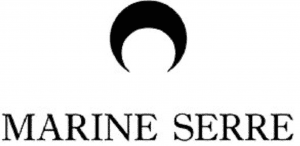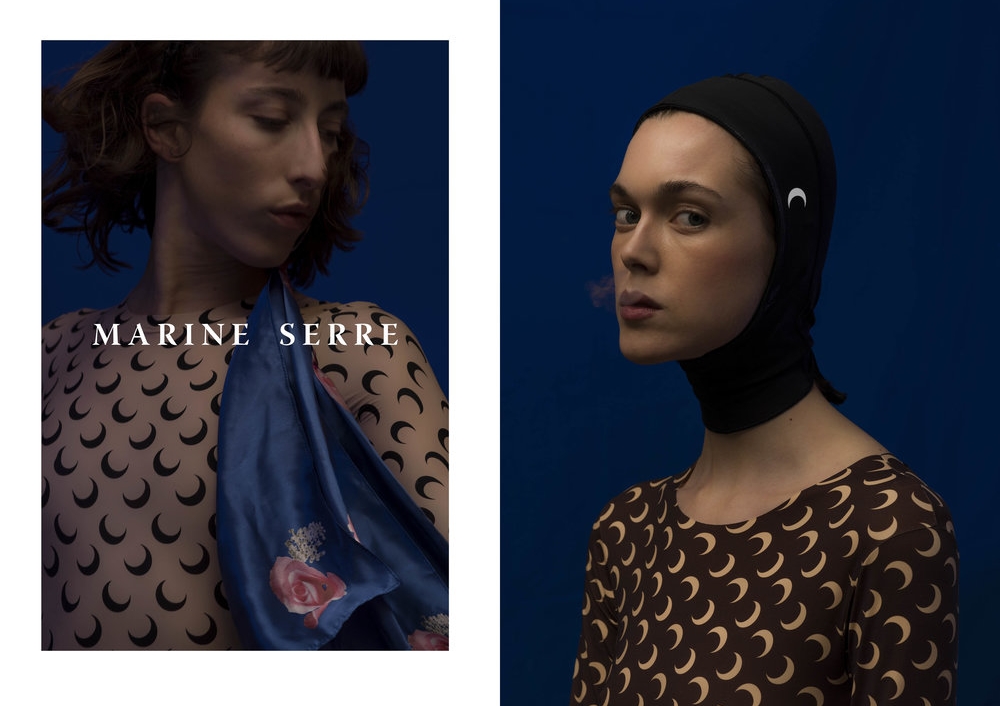Marine Serre is barely 26 and has managed to captivate the fashion industry from the outset of her still-very-short tenure at the helm of her eponymous label. Just months after launching her brand last year, she won the LVMH Prize. Vogue’s Mark Holgate called her debut offerings “terrifically cool,” and “strong and thought-provoking.” In the time since, she has been coined “Paris’s Hottest Young Designer,” and just this week, Garage Magazine called her “the Most Essential Designer Working Today,” while the Washington Post’s Robin Givhan said that Serre “stands out” as a “name you want to remember.”
There are at least a couple of constants when it comes to the work of Ms. Serre. Beyond the the near-constant praise for her very-young brand and her impressive background (she studied at the La Cambre design school in Brussels, interned at Margiela, and was working at Demna Gvasalia’s Balenciaga when she first launched her eponymous label), there is her consistent use of one specific little symbol that appears across all of her collections: a small crescent moon.
There is nary a review of her collections or a mention of her brand more generally that is devoid of a mention of the symbol that adorns so many of her wares – whether it be all-covering catsuits, taffeta jackets, or platform boots. Look closely at her Spring/Summer 2019 wares and you will see a turtleneck peeking out from underneath a dress or two; even those turtle necks bear the little moon and her name. Over the span of her short-but-budding career, it has undoubtedly become her signature motif.
What Serre is doing here is arguably more than merely developing a fleeting trend or giving rise to anguish among some industry and non-industry participants, although she is certainly doing the latter. Designer/writer/advocate Celine Semaan, for instance, called attention to the crescent moon’s connection to Islam and Serre’s depictions of the symbol on predominantly white models in an article for The Cut in March.
From a legal point of view, Serre may be doing something else entirely – something interesting and potentially powerful: she very well may be using the moon symbol as an indicator of source, or in other words, as a trademark. (It is worth noting that Serre has filed a trademark application for registration with the U.S. Patent and Trademark Office (no. 79233495), and with a number of other international trademark offices, such as those in France, Australia, Singapore, and Canada, for a mark that consists of her name and the moon symbol for use on clothing, fragrances, and various types of bags).

Before asserting that there are, in fact, potential trademark rights in the works here, it is worth noting that at least some of the Serre’s uses of the tiny present moon graphic could certainly be deemed more decorative in nature than source-identifying. Such a distinction is significant, as it is one of the fine lines between trademark protection – or, in other words, protection for any word, name, symbol, device, or combination thereof, used to identify and distinguish the goods/services of one company from those of another – and a lack thereof.
As trademark professor Alexandra Roberts stated in her 2017 article, Trademark Failure to Function, “Almost anything can function as a trademark.” However, she cautions that “in order to acquire federal [trademark] protection,” the brand name or logo or graphic, etc. at play “must not only be used in commerce, it must be used as a trademark.” In other words, it must be used “in a way that will draw consumers’ attention to it and lead them to view it as a source indicator.”
The concept of source-identification – as opposed to purely decorative use, which sees a graphic, for instance, used in a merely aesthetic way, and thus, does not function as a trademark (i.e., it does not serve to identify the source of the product) – is relatively simple. Consider Nike’s check mark-esque swoosh. When consumers see a sneaker with a swoosh on it, they know that shoe was made by Nike because the Portland-based sportswear giant has consistently used that graphic in a way that is synonymous with its brand – aka it has consistently used it in a trademark capacity.
Just as the average consumer has come to identify that the swoosh is a trademark tied to Nike, a relatively in-the-know shopper will see a double “C” logo-adorned handbag or perfume bottle and look that product to Chanel. By consistently and repeatedly using their logos in connection with their goods and services (and heavily advertising those goods, of course), Nike and Chanel have trained consumers to link them to their brands, and as a result, trademark rights are born. The same can be said for what Apple has done with its brand name. When a consumer hears the world “Apple” outside of a food context, they think of the Cupertino, California-based iPhone-marker.
These are three of the most well-known trademarks in the world, despite the fact that none of these marks – a check mark-inspired swoosh, two letter “C”s, and the word “Apple” – are inherently novel. This demonstrates the fact that trademarks need not be earth-shatteringly unique to be protected. They simply need to be identifiable by the average consumer as coming from a single source, i.e., a single company.
The lack of novelty requirement that comes with trademark law is good news for Serre, whose graphic of choice reportedly dates back to 2300 BC. But that does not mean that amassing strong trademark rights in the symbol would be an easy feat. Aside from the potentially high bar that she would have to meet to prove that her use of the moon is not merely decorative, there is the need for secondary meaning.
In plain terms, Serre would have to show that consumers link the moon symbol to her brand (or any single fashion brand, for that matter). That could be achieved by showing a handful of different factors, including sales success of products bearing the moon mark, a certain level of advertising that contains the moon mark, consistent use of the mark by the brand, and third-party media attention specifically making mention of the moon mark, among others.
As for whether Serre has strong (or any) trademark rights in the crescent moon in connection with her use of its on garments and accessories is up for debate. In all likelihood, the average consumer does not even know what the Marine Serre brand is. But in some sense, that is likely of little concern here, in large part because the average consumer is not shopping $1,000-plus red PVC trench coats or dresses from the runway that are made from a contrasting neoprene wetsuit top and flowing handkerchief-hem skirt made from a slew of silk scarves.
Nonetheless, for those in the fashion industry and its periphery, which is where Serre’s in-the-know consumers reside, that little moon is a very real indicator of source … for the Marine Serre brand, and that is a powerful asset.
UPDATED (December 25, 2018): The USPTO has granted Serre a registration for the mark consisting her name and the moon symbol. While this registration does not serve to protect her use of the moon symbol on its own (as her brand name is a central component in the mark), it very well may ultimately serve as a stepping stone for Serre to assert rights in the moon graphic on its own at a later date.
UPDATED (March 13, 2020): Serre has since filed a new application fro registration (no. 79284425) for her name and the moon symbol for use on eyewear, jewelry, and paper products, among other things.











